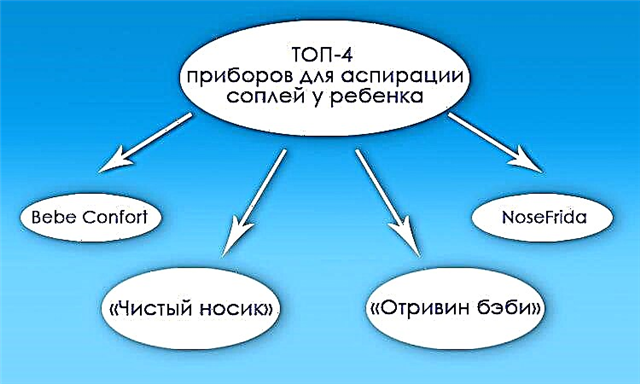Thanks to the development of evolution, man received an immune and lymphatic system, which helped him adapt to new conditions and diseases. So, the function of protecting the respiratory tract in the body is performed by the tubal tonsils located in the cartilaginous part of the auditory tube and pharyngeal duct. They also protect the first line of the larynx from germs, viruses, fungi, and promote immunity.
But, although the tonsils are a kind of shield for the body, sometimes they also need protection and treatment.
Causes of inflammation of the glands
 The average patient is not always fully aware of the causes of glandular lesions and often only takes the fact seriously. However, in order to protect yourself from the disease, you need to look at the root of the problem. Consider the main etiological factors of this inflammatory process:
The average patient is not always fully aware of the causes of glandular lesions and often only takes the fact seriously. However, in order to protect yourself from the disease, you need to look at the root of the problem. Consider the main etiological factors of this inflammatory process:
- most often, the tonsils become inflamed due to fungi living in the oral cavity, which affect them with a weakened immune system;
- damage to the glands also occurs as a result of burns, scratches;
- dysfunction of the tonsils can occur due to hypertrophy; in this condition, the patient is prescribed tonsillectomy or tonsillotomy;
- food germs and frequent colds can cause inflammation;
- vitamin deficiency and hypothermia;
- chronic diseases of the mouth and throat such as stomatitis, caries, etc .;
- Congenital abnormalities, such as a deviated nasal septum, which transfers air to the oral airway, causing cooled air to enter the tonsils, and they become inflamed;
- one of the causes of glandular disease can be the so-called almond slices, but in most cases there is no need to treat or cut them out.
Symptoms
Clinical signs of inflammation of the tonsils can be seen with the naked eye. The glands instantly swell and turn red. A characteristic symptom is also pain when swallowing, a sore throat, an increase in body temperature. If you ignore them, the disease will progress, which is fraught with complications.
The disease manifests itself individually. Some patients have symptoms of intoxication: headache, mood swings, fatigue, hoarseness.
In children, body temperature rises, which can cause seizures, moodiness, crying and refusal to eat.
Types and diagnosis of the disease
If the symptoms appear unexpectedly and are not the result of ARVI, the type of disease should be determined. To do this, you must undergo an examination by an otolaryngologist, as well as a number of diagnostic tests based on a smear from the oral cavity.
It is customary to distinguish 4 types of inflammation of the glands, each of which differs in causes, symptoms and methods of treatment.
- Herpetic sore throat. It is the result of a weakened immune system and occurs in patients infected with the Herpes Simplex virus, as a result of which an infection of the glands develops in the form of a rash, as well as a sore throat-like condition. Treatment consists in taking antiviral drugs such as Cycloferon, Inosine pranobex, Acyclovir, Valavir.
- Fungal tonsillitis. With this disease, a white or yellow coating appears on the tonsils. As a rule, the cause of the disease is long-term antibacterial treatment. This condition is dangerous for children, adherents of diets and starvation, people using dentures, as well as HIV-infected people.

- Bacterial sore throat. Compared to its predecessors, the disease is rather difficult. It is expressed by a purulent bloom on the tonsils, headache and, in some cases, cough. Treatment may include the following groups of drugs: protected penicillins, macrolides, azalides, and cephalosporins. The choice of a specific antibiotic directly depends on the results of bacterial culture. In addition, the patient is advised to use antibacterial sprays, gargle with calendula broth and furacilin.
- Viral sore throat. The causative agents of this type are viral agents, namely herpes type 4, or infectious mononucleosis. The disease affects not only the nasopharyngeal mucosa, but also the lymph nodes, liver and spleen. When donating blood for analysis, the presence of specific mononuclear cells is often found in it. At the same time, the amygdala, as a rule, is not enlarged, but with the development of a runny nose and cough, the disease can give complications, causing purulent inflammation of the middle ear.
If you have similar symptoms, it is recommended to be carefully examined by an ENT. If the doctor is not sure of the diagnosis or sees complications, the patient is referred for additional laboratory tests to obtain more accurate information.
Treatment
 In most cases, inflammation of the tonsils is treated with medication. In order to avoid the development of complications and the transmission of the disease to others, the patient must comply with all medical instructions.
In most cases, inflammation of the tonsils is treated with medication. In order to avoid the development of complications and the transmission of the disease to others, the patient must comply with all medical instructions.
Treatment tactics directly depend on the type of tonsil lesion, the patient's age and the presence of related pathologies. In general, the process of treating tonsils takes 2-3 weeks, if the symptoms have not disappeared, an additional examination is prescribed.
In order for the treatment to take place without complications, the patient should:
- gargle with medications (Chlorophyllipt, Miramistin, etc.) or infusions (garlic, chamomile, etc.) daily at least 5 times a day;
- when rinsing, stick out your tongue as much as possible, carry out the procedure with a warm solution, for at least 30 seconds;
- to protect those around the patient from infection, individual dishes should be allocated and a medical mask should be used;
- observe bed rest;
- drink special decoctions and teas.
Important! With inflammation of the tonsils, it is advisable to eat soft food so as not to injure and relieve pain in the tonsils.
Predictions and results (complications)
 Treatment of tonsil diseases in general is an inexpensive procedure, the timely implementation of which will help minimize the risks of complications. With congenital glandular pathologies, surgical intervention is prescribed, since in this case it has the highest therapeutic effect.
Treatment of tonsil diseases in general is an inexpensive procedure, the timely implementation of which will help minimize the risks of complications. With congenital glandular pathologies, surgical intervention is prescribed, since in this case it has the highest therapeutic effect.
The main goal of therapy is to prevent the development of complications that will require much more treatment costs. So, in the absence of timely treatment, herpetic sore throat can provoke the development of purulent and infectious processes in the respiratory organs. In the most severe cases, laryngeal edema is possible.
Sore throat of a bacterial and viral type tends to be transmitted by airborne droplets, and also differs in quite serious complications, up to infection of the lymphatic system, and, as a result, infection of the whole organism.
Conclusion
It is necessary to carry out the treatment of diseases of the tonsils under the supervision of an otolaryngologist. You should not self-medicate or resort to traditional medicine recipes. Achieve a high therapeutic effect is possible only through a comprehensive and properly selected therapy.



